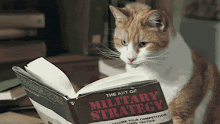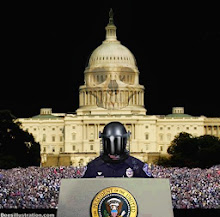
By PAUL LEVY
http://www.awakeninthedream.com/wordpress/shedding-light-on-evil/
It is a fact that cannot be denied: the wickedness of others becomes our own wickedness because it kindles something evil in our own hearts[i]
~C. G. Jung
Whether we see evil in the terrorists or in George W. Bush, I simply cannot imagine anyone would dispute that the face of evil has emerged in our world. There is something about looking at evil, however, that is very different than when we passively witness something we remain unaffected by. No one can see evil and stay untouched. Jung, who to my mind has the deepest insight into the nature of evil of anyone I’ve encountered, said, “The sight of evil kindles evil in the soul─there is no getting away from this fact”[ii] In dealing with evil, we have to recognize that it is not something we can see and remain separate from, as if safely sitting in the audience, out of harm’s way. When we see evil, something inside of us is ignited and set aflame.
At the sight of evil, Jung continued, “Indignation leaps up, angry cries of ‘Justice!’ pursue the murderer, and they are louder, more impassioned and more charged with hate the more fiercely burns the fire of evil that has been lit in our souls.”[iii] When we see evil, if we react with moral indignation, cocksure of our own innocence and righteousness, this itself is an expression that we ourselves have become infected by evil and have become a conduit for evil to act itself out through us. Jung said of this, “True, we are innocent, we are the victims, robbed, betrayed, outraged; and yet for all that, or precisely because of it, the flame of evil glowers in our moral indignation.”[iv]
When we see evil, it triggers a resonant darkness within us, as if we have secretly recognized a part of ourselves. It is important to understand that we could not look at the face of evil and truly see it unless we had that very same evil within ourselves. We wouldn’t be able to recognize it otherwise.
When we see a deeper, archetypal energy such as evil, the fact that something within ourselves becomes touched and activated is analogous to what happens when we see and experience the unconscious as it manifests itself through others. It is impossible to see and experience the unconscious as it is played out in our world and remain a detached, passive witness. When we see the unconscious “out there,” our own unconscious is activated by the experience. The same is true when we witness evil.
It is then a question of whether we can integrate what has been triggered in us, or do we inwardly dissociate from our own darkness, imagining it to be separate from ourselves, and project the evil “out there” onto some “other.” Projecting the shadow like this, Jung said, “…strengthens the opponent’s position in the most effective way, because the projection carries the fear which we involuntarily and secretly feel for our own evil over to the other side and considerably increases the formidableness of his threat.”[v] The dream-like nature of this world is such that if we project out our own darkness, the world will shape-shift and provide convincing evidence that the evil really does exist out there, which simply confirms to us our delusion in a never-ending, self-generating feedback loop.
To the extent that any of us have withdrawn our projection of the shadow “out there,” we have begun, as Jung said, “…the only struggle that is really worthwhile: the fight against the overwhelming power-drive of the shadow.”[vi] For as Jung pointed out, every person:
“harbours within himself a dangerous shadow and adversary who is involved as an invisible helper in the dark machinations of the political monster. It is in the nature of political bodies always to see the evil in the opposite group, just as the individual has an ineradicable tendency to get rid of everything he does not know and does not want to know about himself by foisting it off on somebody else.”[vii]

Both the individual, as well as the body politic, have a tendency to project the evil outside of themselves. An individual projecting the shadow outside of him or herself actually feeds into, supports, and helps to create the shadow projection of the greater body politic.
We are all complicit in what our country is doing in Iraq. We all share in the guilt. The bombs dropping on innocent civilians have our names on them. We are not separate but interconnected and interdependent beings, all part of the greater world community. Jung had this to say, “Since no man lives within his own psychic sphere like a snail in its shell, separated from everybody else, but is connected with his fellow-men by his unconscious humanity, no crime can ever be what it appears to our consciousness to be: an isolated psychic happening.”[viii] This collective guilt, what Jung calls “guilt by contagion” belongs to everyone, there is no getting away from it. To again quote Jung:
“the murder has been suffered by everyone, and everyone has committed it…we have all made this collective psychic murder possible…in this way we are unavoidably drawn into the uncleanness of evil; no matter what our conscious attitude may be. No one can escape this.”[ix]
The evil playing out on the world stage is something all 6.4 billion of us are mutually creating and “dreaming up” together. This is to say that the evil incarnating in our world is something we are not separate from but are all playing roles in and collaborating with. Edmund Burke said, “Evil can only happen when good people do nothing.” Albert Einstein made the same point when he said, “The world is a dangerous place to live, not because of the people who are evil, but because of the people who don’t do anything about it.”

By being a “dreamed up phenomenon,” the evil appearing in our world is a full-bodied reflection, in living, breathing color of the evil within ourselves. An inner process happening deep within the collective unconscious of all of humanity has been externalized and projected outside of ourselves, literally “dreamed up” into materialization. If the evil that is manifesting prompts enough of us, however, to recognize that it is a mirrored reflection of a part of ourselves and we self-reflect, we can collaboratively metabolize the evil, akin to T cells fighting a virus. We become a collective alchemical container able to co-operatively transmute the darkness into the light of species-wide realization.
Jung said it is only those among us who are self-reflective who have “…the realization of the immense and overwhelming power of evil, and of the fact that mankind is capable of becoming merely the instrument.”[x] [Emphasis added] The realization of our potential susceptibility to self-deception, which could lead to unwitting acts of evil, serves as a psychic immunization, and creates true humility, a safeguard against evil. This is why, to quote Jung, “The true leaders of mankind are always those who are capable of self-reflection.”[xi] Jung also pointed out that, “…only relatively few individuals can be expected to be capable of such an achievement, and they are not the political but the moral leaders of mankind.”[xii] Compared to the moral leaders of humanity, who are embodying consciousness, the political leaders are literally “dreamed up” to be the embodied outer reflection of our collective inner unconsciousness. This always results in criminality.

If we refuse to look at our own darkness and continue to try and destroy the evil we perceive to be outside of ourselves, we fall prey to it and unwittingly become an agent of evil. If we fight evil in our habitual way, which is to try and murder it, we ourselves become a murderer. Interestingly, one of the inner meanings of the word “Satan” is “murderer.” It is like in wrestling with the Devil, the Devil penetrates into our body, pulsates through our very cells and incarnates itself in, through, and as us. By fighting evil, we become possessed by it. Is this the meaning of Christ’s teaching “resist not evil”?
To deal with evil as it manifests in the world, we have to be able to look at and embrace the evil within ourselves. Jung felt, “It is surely better to know that your worst enemy is right there in your own heart.”[xiii] If we refuse to look at the evil within our own heart, however, our refusal simply feeds the evil. If we look away and allow evil to be acted out, thinking that we are innocent, we are unconsciously colluding with evil.
If when we see evil, we experience it as being “out there,” we fall under the illusion of our own shadow projection. Discussing the challenge of recognizing our own innate potential for evil, Aleksandr Solzhenitsyn comments,
“If only it were all so simple! If only there were evil people somewhere insidiously committing evil deeds, and it were necessary to separate them from the rest of us and destroy them. But the line dividing good and evil cuts through the heart of every human being.”[xiv]

The evil that is playing out in the world today is a deeper, archetypal energy that has been re-enacted many times throughout human history. Though he could have been talking about Bush, Jung said of Hitler:
“For this theatrical hysteric and transparent imposter was not strutting about on a small stage, but was riding the armoured divisions of the Wehrmacht, with all the weight of German heavy industry behind him. Encountering only slight and in any case ineffective opposition from within, the nation of eighty million crowded into the circus to witness its own destruction.”[xv]

Frighteningly, in this regard, Bush has outdone Hitler, as Bush has the greatest war machine the world has ever known at his disposal. And he wants to weaponize space, and build even more nuclear bombs. Bush is truly a madman. We need to recognize this.
Jung said, “If there was ever a truly apocalyptic era, it is ours. God has put the means for a universal holocaust into the hands of man.”[xvi] What is unique about our current situation, Jung continued:
“is not that present-day man is capable of greater evil than the man of antiquity or the primitive. He merely has incomparably more effective means with which to realize his propensity to evil. As his consciousness has broadened and differentiated, so his moral nature has lagged behind. That is the great problem before us today: Reason alone no longer suffices”[xvii] [Emphasis in original}
It has become clear that our rationality alone cannot resolve our world crisis, something else is needed. We are at an event horizon in the process of the expansion of consciousness itself. In this process, Jung said, “…we need the illumination of a holy and whole-making spirit─a spirit that can be anything rather than our reason.”[xviii]

We are living in an extremely dangerous time, but it is also a time of great opportunity. Jung’s insight was that:
“We are living in what the Greeks called the Kairos─the right moment─for a “metamorphosis of the gods,” of the fundamental principles and symbols. This peculiarity of our time, which is certainly not of our conscious choosing, is the expression of the unconscious man within us who is changing. Coming generations will have to take account of this momentous transformation if humanity is not to destroy itself through the might of its own technology and science.”[xix]
The unleashing of atomic energy, Jung continued:
“has given the human race the power to annihilate itself completely. The situation is about the same as if a small boy of six had been given a bag of dynamite for a birthday present[xx] …the danger that threatens us now is of such dimensions as to make this last European catastrophe [World War II] seem like a curtain-raiser.[xxi]
In an interview with Mircea Eliade in 1952, Jung revealed the scope of his vision when he commented that:
“as long as Satan is not integrated, the world is not healed and man is not saved. But Satan represents evil, and how can evil be integrated? There is only one possibility: to assimilate it, that is to say, raise it to the level of consciousness[xxii] …[this is a state] in which the devil no longer has an autonomous existence but rejoins the profound unity of the psyche. Then the opus magnum [the “great work” of alchemy] is finished: the human soul is completely integrated.[xxiii]

Evil, just like a vampire, can’t stand to be seen, however, for once it is seen and made conscious, it loses its omnipotence and autonomy, as it can no longer act itself out through us. Our task, as Jung reminded us, is “making the darkness conscious.” As each of us recognizes and integrates our own darker halves, we liberate the energy that was bound up in the compulsion to unconsciously act out and dream up our darker side out in the external world. Instead, this archetypal energy of the shadow is assimilated into the wholeness of our personality and becomes available for the expression of creativity and love. Any one of us making the darkness conscious lightens the weight for all of us, as we are all connected.
We need to understand the nature of the “beast” with which we are dealing when we are confronted with evil. The fact that our trying to destroy evil is itself the very thing propagating evil is showing us something. Evil is revealing something to us. This is why Jung referred to Satan as “…the godfather of man as a spiritual being,”[xxiv] meaning that Satan can activate in humankind a process of spiritual awakening that would have been impossible without his intervention. By rebelling against God, Jung continued, “Lucifer was perhaps the one who best understood the divine will struggling to create a world and who carried out that will most faithfully.”[xxv]
Whether the evil currently wreaking havoc on our planet will destroy us or further the evolution of our species and awaken us to deeper levels of our being is entirely up to us. The key is for enough of us to become the aforementioned moral leaders of humanity and look in the mirror, self-reflect, and recognize our complicity with the darkness that is playing out in our world. Self-reflection is the very best service we can do for the divine and the highest way for us to love God. Self-reflection is a true retrieval of our soul─it has an integrating effect, as it is a gathering together and a re-collecting of what had previously been projected out, divided, and separated by the dis-integrating effect of evil. Jung said:
“Self-reflection or─what comes to the same thing─the urge to individuation gathers together what is scattered and multifarious, and exalts it to the original form of the One, the Primordial Man. In this way our existence as separate beings, our former ego nature, is abolished, the circle of consciousness is widened, and because the paradoxes have been made conscious the sources of conflict are dried up.[xxvi]
Jung recognized that whenever evil appeared in an individual’s personal process, some deeper good always came out of the experience that wouldn’t have emerged without the manifestation of evil. Could the same thing be true on a collective scale? Could the evil coming out of hiding in the shadows and becoming visible for all who have eyes to see be the harbinger of a deeper process of collective realization that is becoming available to us because of its emergence? Jung openly wondered whether “…in this very power of evil God might not have placed some special purpose which it is most important for us to know.”[xxvii]

With the appearance of evil, we are invited and even prodded to participate in an evolutionary quantum leap in and of consciousness itself. A doorway has opened up for us to collectively snap out of our imagined identities as “separate beings” and realize that we are all interconnected, on the same side and part of a greater whole. Jung had this to say, “We are perhaps the actors, the implements, the toolbox of a being greater than ourselves, greater at least in having more volume or periphery in which we are contained.”[xxviii] As Buddhism points out, compassion spontaneously arises when we recognize how we interdependently co-arise together. We are all cells in a greater body. We depend on each other.
We are experiencing the revelation of the hidden God, the deus absconditus, the dark side of God. The key to activating the secret blessing aspect of malignant egophrenia is our attitude towards that which we perceive as evil. Will we not recognize what the “shadow of the Lord” is revealing to us and continue to unconsciously act it out and destroy ourselves? Or will the evil propel enough of us over the edge to self-reflection, precipitating a mass spiritual awakening unimaginable until this moment in history? Evil is a true quantum phenomenon, in that it contains both of these possibilities in potential, and how it will manifest depends on how we interact with it. Fighting the devil is radically different than loving God. The choice is truly ours.

(A pioneer in the field of spiritual emergence, Paul Levy is a healer in private practice, assisting others who are also awakening to the dreamlike nature of reality. Paul is also a visionary artist and a spiritually-informed political activist. He is the author of The Madness of George Bush: A Reflection of Our Collective Psychosis,which is available on his website www.awakeninthedream.com. (See the first chapter, The Madness of George W. Bush: A Reflection of our Collective Psychosis). Please feel free to pass this article along to a friend if you feel so inspired. You can contact Paul at paul@awakeninthedream.com; he looks forward to your reflections. © Copyright 2010)
[i] Jung, Civilization in Transition, CW 10, par. 408.
[ii] Ibid., par. 410.
[iii] Ibid., par. 408.
[iv] Ibid., par. 410.
[v] Ibid., par. 572.
[vi] Ibid., par. 455.
[vii] Ibid., par. 576.
[viii] Jung, Psychology and Religion: East and West, CW 11, par. 408.
[ix] Ibid., par. 408.
[x] Jung, Civilization in Transition, CW 10, par. 451.
[xi] Ibid., par. 462.
[xii] Ibid., par. 451.
[xiii] Ibid., par. 456.
[xiv] Solzhenitsyn, The Gulag Archipelago.
[xv] Jung, Civilization in Transition, CW 10, par. 419.
[xvi] Jung, Letters, vol. 2, p. 209.
[xvii] Jung, Civilization in Transition, CW 10, par. 574.
[xviii] Jung, Psychology and Religion: East and West, CW 11, par. 267.
[xix] Jung, Civilization in Transition, CW 10, par. 585.
[xx] Ibid., par. 485.
[xxi] Ibid., par. 487.
[xxii] McGuire and Hull, C. G. Jung Speaking, p. 227.
[xxiii] Ibid., p. 229.
[xxiv] Jung, Psychology and Religion: East and West, CW 11, par. 600.
[xxv] Ibid., par. 290.
[xxvi] Ibid., par. 401.
[xxvii] Jung, Psychology and Alchemy, CW 12, par. 36.
[xxviii] Jung, Nietzsche’s Zarathustra, vol. 2, p. 1348.


















































